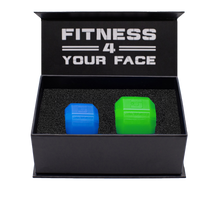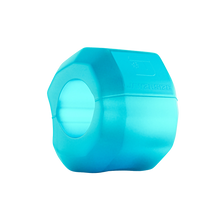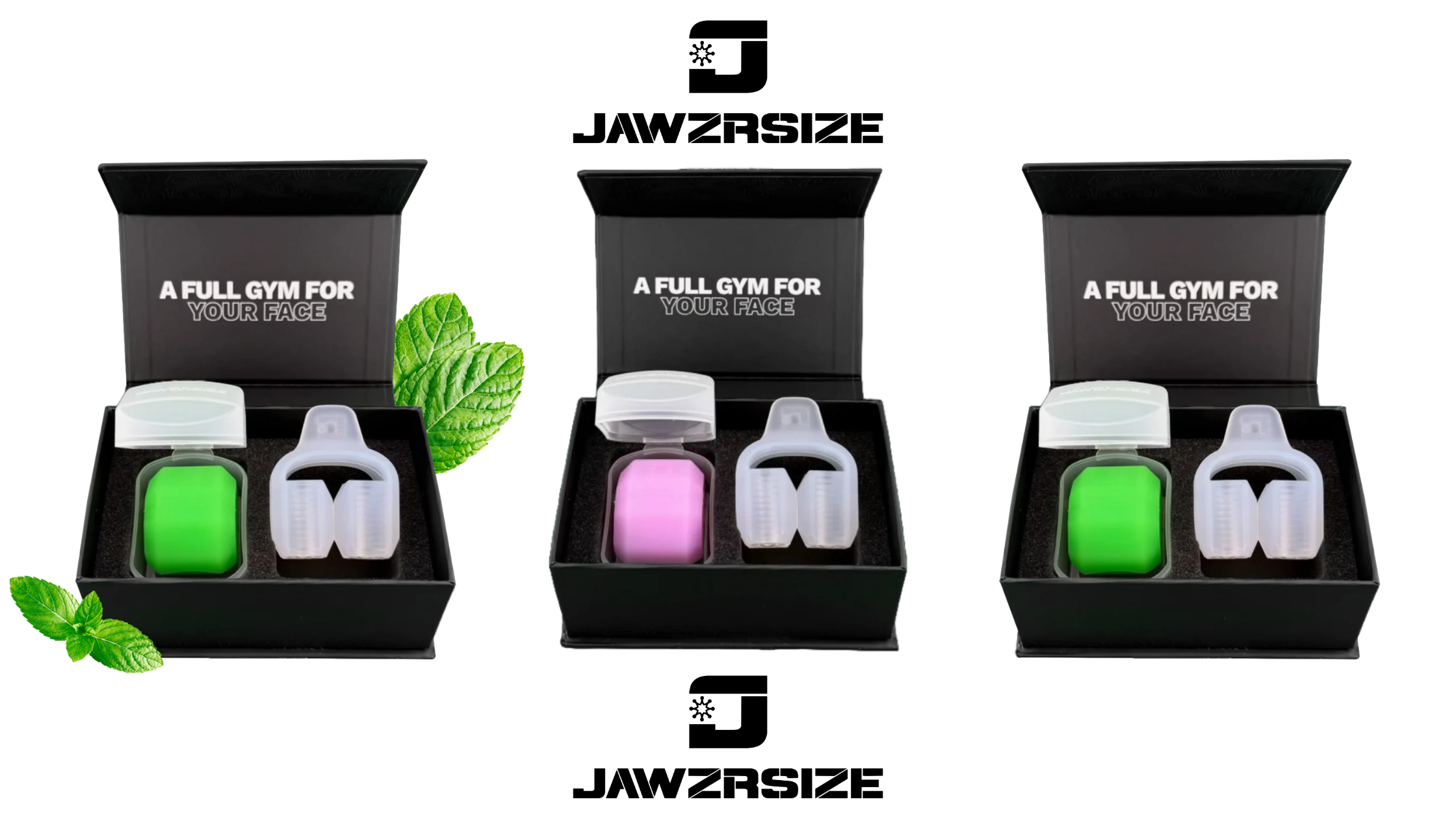Mewing has gained popularity as a natural, non-invasive way to enhance facial structure and improve overall health. By adopting proper tongue posture, you can potentially achieve a more defined jawline, better breathing patterns, and improved oral posture.
While the concept of mewing has been around for decades, it has recently gained traction on social media platforms, with many people sharing their experiences and results. However, it's important to understand the technique and its potential benefits before incorporating it into your daily routine.
In this article, we'll dive into the fundamentals of mewing, exploring what it is, how it works, and the steps you can take to start practicing it effectively.
What is Mewing?
Mewing is a technique that involves positioning the tongue against the roof of the mouth to improve facial structure, jawline definition, and overall health. It's based on the idea that proper tongue posture can influence the growth and development of the face.
The concept of mewing was developed by Dr. John Mew, a British orthodontist, and popularized by his son, Dr. Mike Mew. They argue that modern diets and lifestyle habits, such as mouth breathing and poor oral posture, can lead to underdeveloped facial structures and various health issues.
By consciously maintaining proper tongue posture, mewing aims to promote the natural development of the face, particularly the jawline and cheekbones. This is achieved by keeping the tongue pressed against the palate, which can apply gentle pressure to the maxilla (upper jaw) and encourage forward and upward growth.
Why is Mewing Important?
Mewing offers several potential benefits for your overall health and well-being:
Improved Facial Structure
Proper tongue posture can help guide the growth and development of your facial bones, particularly the maxilla (upper jaw) and mandible (lower jaw). This can lead to a more defined jawline, prominent cheekbones, and better facial symmetry.
Better Breathing Patterns
Mewing encourages nasal breathing, which is more efficient than mouth breathing. Nasal breathing filters, warms, and humidifies the air you inhale, promoting healthier lungs and reducing the risk of respiratory issues.
Enhanced Sleep Quality
By maintaining proper tongue posture during sleep, you may reduce the likelihood of snoring and sleep apnea. Mewing can help keep your airways open, allowing for more restful and uninterrupted sleep.
Improved Oral Health
When your tongue rests against the roof of your mouth, it can help maintain a proper bite and prevent issues like teeth misalignment, crowding, or jaw pain. Mewing may also reduce the risk of gum disease and tooth decay by promoting proper oral posture and swallowing patterns.
Increased Confidence
Achieving a more defined jawline and balanced facial features through mewing can boost your self-esteem and confidence. Many people report feeling more attractive and self-assured after consistently practicing mewing.
It's important to note that while mewing has gained popularity in recent years, more scientific research is needed to fully understand its long-term effects and efficacy. Results may vary from person to person, and it's crucial to approach mewing with realistic expectations and patience.
How to Mew Properly?
Mewing effectively requires consistent practice and patience. Follow these steps to incorporate mewing into your daily routine:
1. Find the Right Tongue Position
2. Keep Your Mouth Closed
3. Maintain Good Posture
4. Practice Consistently
5. Combine with Facial Exercises for Enhanced Results
To find the right tongue position, place the entire tongue against the roof of your mouth, with the tip resting just behind your front teeth. Apply gentle pressure across the palate. Keep your mouth closed, with your lips gently sealed and your teeth slightly apart. Avoid clenching your jaw or teeth, and focus on breathing through your nose.
Maintain good posture by keeping your head up and your neck straight. Avoid slouching or tilting your head forward, as proper posture supports correct tongue placement. Practice mewing consistently by incorporating it into your daily routine. Start with short sessions and gradually increase the duration as you become more comfortable with the technique.
To enhance your results, combine mewing with facial exercises that target the jaw, cheeks, and neck muscles. These exercises can help strengthen and tone the muscles, complementing the effects of mewing. Be patient and persistent, as visible changes may take time to appear.
1. Find the Right Tongue Position
The first step to mewing properly is placing your entire tongue against the roof of your mouth. The tip of your tongue should rest just behind your front teeth, without touching them. Apply gentle, consistent pressure across your palate, ensuring your tongue is spread out and not bunched up.
This tongue position may feel unnatural at first, especially if you're used to resting your tongue on the bottom of your mouth. However, with practice, it will become more comfortable and habitual.
To help find the correct spot, try making an "N" sound. The place where your tongue touches the roof of your mouth when making this sound is where it should rest while mewing. You can also try swallowing, paying attention to where your tongue naturally goes during the swallowing motion.
Once you've found the right position, focus on maintaining it throughout the day, even when speaking or eating. Over time, this consistent pressure from your tongue will help guide the growth and development of your facial bones, particularly the maxilla and mandible.
2. Keep Your Mouth Closed
Keeping your mouth closed is an essential part of mewing properly. Gently close your lips, allowing your teeth to rest slightly apart. This may feel unnatural at first, especially if you're accustomed to breathing through your mouth or clenching your jaw.
Avoid grinding your teeth or tensing your jaw muscles while mewing. If you find yourself clenching, take a moment to relax and release any tension. Proper mewing technique involves a relaxed, natural posture.
Focus on nasal breathing, inhaling and exhaling through your nose rather than your mouth. Nasal breathing is more efficient and helps maintain the correct tongue position. It may take some practice to transition from mouth breathing to nasal breathing, but it will become more comfortable over time.
If you struggle with nasal breathing due to congestion or other issues, consider addressing the underlying cause. Consult with a healthcare professional to discuss potential solutions, such as nasal sprays, allergy medications, or breathing exercises.
Remember, keeping your mouth closed and breathing through your nose are key components of mewing. With consistent practice, these habits will become second nature, supporting your mewing journey and overall oral health.
3. Maintain Good Posture
Proper posture is key to effective mewing. Keep your head up and your neck straight, aligning your spine in a neutral position. Avoid slouching or tilting your head forward, as this can interfere with correct tongue placement and lead to neck and jaw tension.
Good posture supports proper tongue positioning by ensuring that your airways remain open and unobstructed. When you maintain an upright stance, your tongue can rest more easily against the roof of your mouth, allowing for consistent and comfortable mewing.
To improve your posture, try the following tips:
1. Stand or sit tall, imagining a string pulling the top of your head towards the ceiling2. Keep your shoulders relaxed and down, away from your ears
3. Tuck your chin slightly, keeping your head level and your gaze forward
4. Engage your core muscles to support your spine and maintain a neutral pelvis
Incorporating posture-enhancing exercises, such as yoga, Pilates, or resistance training, can also help strengthen the muscles that support proper alignment. Regularly checking and correcting your posture throughout the day will reinforce good habits and make mewing more effective.
Remember, maintaining good posture is a continuous practice. Be patient with yourself and make small adjustments as needed. As you become more aware of your posture and incorporate mewing into your daily routine, you'll find that proper alignment becomes more natural and comfortable over time.
4. Practice Consistently
Consistency is key to seeing results from mewing. Incorporate the technique into your daily routine, making it a habit to maintain proper tongue posture throughout the day. Start with shorter practice sessions, gradually increasing the duration as you become more comfortable with the positioning.
Set aside dedicated time each day to focus on mewing, such as during your morning or evening routine. You can also practice mewing while engaging in other activities, like reading, working at your desk, or watching television. The more consistently you practice, the more natural and effortless mewing will become.
As you build mewing into your daily life, be patient with the process. Results may not be immediately visible, as changes in facial structure and jawline definition often occur gradually over time. Stick with your practice, even if you don't see significant changes right away.
To help maintain consistency, consider setting reminders on your phone or placing sticky notes in frequently visited areas, prompting you to check your tongue posture. You can also track your progress by taking regular photos or measurements, which can provide motivation and help you stay committed to your mewing journey.
Remember, everyone's experience with mewing is unique, and results may vary from person to person. Factors such as age, genetic predisposition, and overall health can influence the speed and extent of changes you may observe. Focus on the process and the potential long-term benefits, rather than seeking immediate or drastic transformations.
Consistency, patience, and a positive attitude are essential components of a successful mewing practice. By making mewing a regular part of your routine and staying committed to the technique, you'll be well on your way to achieving the benefits it can offer, such as improved facial structure, better breathing, and enhanced overall health.
5. Combine with Facial Exercises for Enhanced Results
While mewing focuses on tongue posture, incorporating targeted facial exercises can further enhance your results. These exercises actively strengthen the muscles in your face, neck, and jaw, complementing the passive training provided by mewing.
Facial exercises, such as jaw clenches, chin lifts, and cheek raises, can help tone and define your facial features. They promote blood circulation, stimulate collagen production, and improve the overall elasticity of your skin. When combined with mewing, these exercises offer a comprehensive approach to improving facial structure and achieving a more sculpted appearance.
To get started, set aside a few minutes each day to perform a series of facial exercises. Begin with a gentle warm-up, such as massaging your face or doing a few neck rolls. Then, move on to targeted exercises for your jaw, cheeks, and neck. Perform each exercise for 10-15 repetitions, focusing on controlled, deliberate movements.
As you progress, you can gradually increase the intensity and duration of your facial exercise routine. Listen to your body and avoid overexerting yourself, as this can lead to tension or strain. Remember to maintain proper form and breathe deeply throughout each exercise.
Combining mewing with facial exercises creates a synergistic effect, addressing both the underlying structure and the surface-level appearance of your face. With consistent practice and patience, you can work towards achieving a more defined jawline, reduced facial sagging, and an overall more youthful and vibrant appearance.
Benefits of Mewing
Mewing offers several advantages that can contribute to your overall well-being and facial aesthetics. When practiced consistently, mewing can lead to noticeable improvements.
Improved facial structure and jawline definition
Proper tongue posture can guide the development of your facial bones, potentially resulting in a more defined jawline and enhanced facial symmetry.
Better breathing and sleep quality
Mewing encourages nasal breathing, which can improve lung function and promote restful sleep by reducing mouth breathing.
Potential relief from issues like sleep apnea and snoring
Maintaining the correct tongue position can help keep airways open, potentially reducing symptoms of sleep apnea and snoring.
Enhanced overall health and well-being
By supporting better breathing patterns and oral posture, mewing can contribute to improved oral health and respiratory efficiency.
Final Thoughts
Mewing is a straightforward technique that can positively impact your facial structure and health. Consistency in practice is vital for seeing results. While progress may take time, staying committed to your mewing routine can help you achieve a more defined jawline and improved facial aesthetics.
Pairing mewing with tools like Jawzrsize can further enhance your efforts by actively strengthening your jaw muscles. Remember to be patient and persistent in your practice.
Jawzrsize enhances your facial fitness journey by providing an active approach to strengthening jaw muscles, complementing the passive benefits of mewing. Consider adding Jawzrsize to your routine for comprehensive facial improvement.
Visit Jawzrsize to explore tools that can help you achieve your facial goals.
How to mew properly: Frequently Asked Questions
How long does it take to see results from mewing?
Results vary by individual, but many see changes over several months with regular practice.
Can mewing fix an overbite or underbite?
Mewing may help improve alignment in some cases, but it might not replace orthodontic treatments for severe issues.
Does Mewing Work?
Mewing is a technique that involves positioning the tongue against the roof of the mouth to potentially influence facial structure and improve breathing. While there is anecdotal evidence and testimonials suggesting that mewing might lead to subtle changes in facial appearance, scientific research on its effectiveness is limited, and results can vary significantly between individuals.
Is Mewing Bad for You?
As for whether mewing is bad for you, there are generally no serious risks associated with the practice when done correctly. However, excessive or improper techniques could potentially cause strain or discomfort in the jaw and mouth. It is advisable to proceed cautiously and consult a healthcare professional, especially if you experience any pain or misalignment.
Is mewing suitable for adults, or just children and teenagers?
Both adults and younger individuals can benefit, though younger people may see more drastic changes due to ongoing development.
Can mewing replace orthodontic treatment?
While it can complement treatment, severe misalignments typically require professional orthodontic care.
Are there any risks or side effects associated with mewing?
When done correctly, risks are minimal. Avoid applying excessive force to prevent discomfort or strain.







